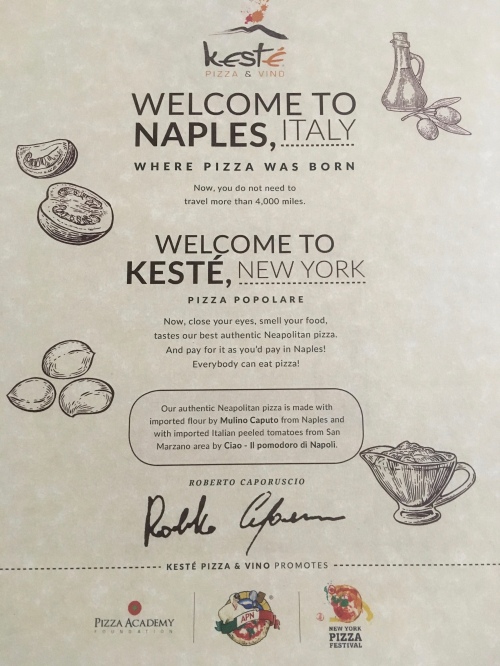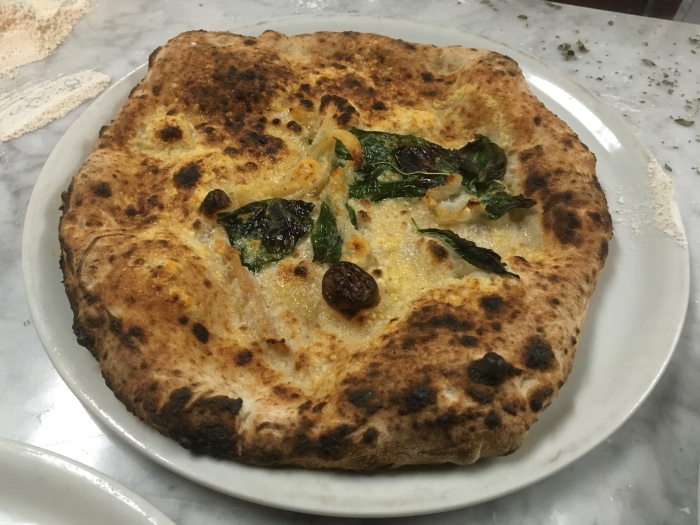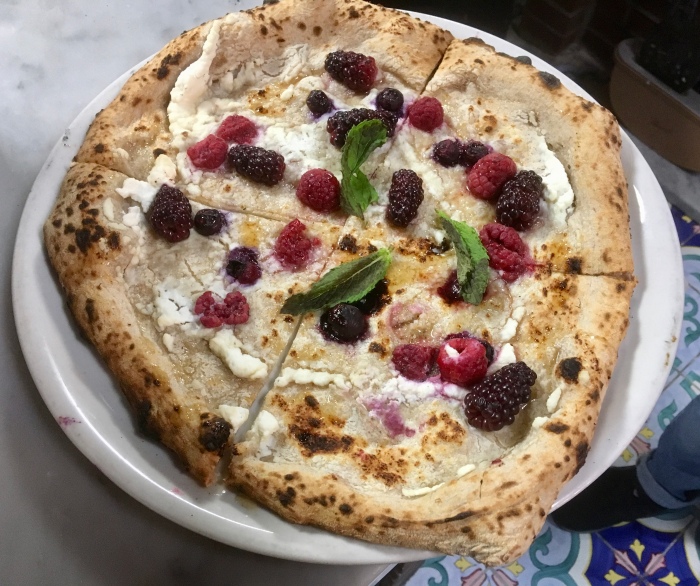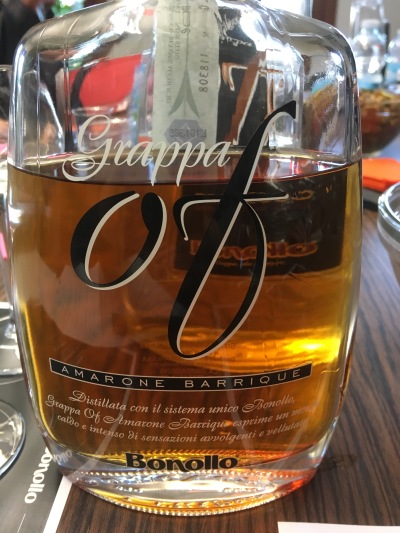Tom Maresca is a wine writer for whom I have the utmost respect. In his blog, Tom’s Wine Line, he wrote this excellent review of Daniele Cernilli’s Book, The Essential Guide to Italian Wine, that expresses my thoughts exactly.
The Essential Guide to Italian Wine? Very Possibly
With its recently released 2019 edition, its fifth, Daniele Cernilli’s Essential Guide to Italian Wine has come of age. Published now in Italian, English, and German editions, well over 600 pages long (and well indexed), and reviewing 1,134 estates and 2,809 wines, the Essential Guide certainly covers the Italian wines that a North American consumer needs to know about – in fact, many more than are currently available in this hemisphere. But one can always hope.
Cernilli’s Guide is organized in the classic way, region by region, the producers listed alphabetically and awarded zero, one, two, or three stars based on their total production and track record; and selected individual wines scored on the now standard, to me infamous 100-point scale and their price range indicated – all useful information, handily presented.
For those who may not recognize his name, Daniele Cernilli is a central figure in the Italian wine world, a critic of major importance and great knowledge. He was one of the founders of Gambero Rosso and was deeply involved not only in its editing but also in the whole process of its evaluations, which by way of their one-, two-, and three-bicchieriawards became the most prestigious of all of Italy’s ranking systems.
When he and Gambero Rosso parted ways several years back, Cernilli reinvented himself as Doctor Wine and began creating his Essential Guide.
I shudder to think of the amount of work it took to bring it to its present condition, especially since Cernilli and his co-workers do not solicit samples or accept advertising from individual wineries. Instead they visit wineries, participate in regional and consorzio tastings, and even buy wines from the same sort of shops Italian consumers patronize. That last practice will send chills up the spines of wine magazine publishers on several continents.
Full disclosure: I’ve known Daniele Cernilli for at least two decades. Even fuller disclosure: We don’t always agree – in fact, we have sometimes been on opposite sides of a wine, a winery, or a wine style. But I don’t know anyone who knows the wines of Italy – all of Italy – in greater depth than he does, so I always take his evaluations seriously.
Here’s a representative example of both his knowledge and our occasional disagreements: The 2019 Guide’s White Wine of the Year award is shared by two wines:
- Fiano di Avellino Stilèma 2015, Mastroberardino, Campania
- Solo MM 15 2015, Vodopivec, Friuli Venezia Giulia.
Now, Fiano di Avellino is a justly esteemed grape variety, and Mastroberardino has long been one of its finest producers. Additionally, I happen to have tasted the Stilèma, and I agree totally with Cernilli’s judgment of its greatness. Here’s what he says of it in his entry:
Typical notes of flint, then fresh almond, wild herbs, elegant and extremely clear aromas. Agile and savory taste dominated by a magical freshness that gives elegance and drinkability to the wine. Smooth and long persistence. Great wine.
 Stilèma is the first fruit of an experiment initiated by the late Antonio Mastroberardino to use materials derived from old and especially from pre-phylloxera vineyards (of which there are several in the Fiano zone) to back-engineer Fiano di Avellino to the sort of prime vines and field and cellar techniques that yielded the greatest wines of what we can call the “pre-industrial years” of Italian winemaking. As Antonio’s son Piero puts it:
Stilèma is the first fruit of an experiment initiated by the late Antonio Mastroberardino to use materials derived from old and especially from pre-phylloxera vineyards (of which there are several in the Fiano zone) to back-engineer Fiano di Avellino to the sort of prime vines and field and cellar techniques that yielded the greatest wines of what we can call the “pre-industrial years” of Italian winemaking. As Antonio’s son Piero puts it:
We intend to evoke the style of vinification of the native vines of Irpinia (Greco, Fiano and Aglianico) as it took place between the end of the 50s and the beginning of the 70s of the twentieth century for Taurasi, and between the years 70 and 80 for the two noblest whites of Irpinia. It is, then, the style (or the Stilèma) of a family that interprets, over generations, the natural heritage of its territory, which makes it specific, as predestined to play a role in that land.
Noble purposes, and already producing noble results.
But what of Cernilli’s other choice for White Wine of the Year? Solo MM 15 2015 is a wine and Vodopivec a maker unknown to me. Cernilli describes winemaker Paolo Vodopivec as a meticulous and devoted craftsman, committed to the very localized traditions of the Friulian Carso and to experimentation with vinifying wines in amphorae. Of this wine, he says:
100% Vitovska grapes. Fermented in amphora for 6 months then aged in large casks. Unfiltered. Bright straw yellow color. Austere nose offering notes of sea breeze and aromatic herbs. The palate is expressive, briny and citrusy; powerful and fresh, vibrant, and with a unique personality. Wonderful wine.
 That’s certainly detailed enough to prompt me to look for a bottle next time I’m in Italy, since I infer that it comes to this hemisphere only occasionally, in small quantities and at fairly high prices. A little research told me that Vitovska grapes are very localized within Friuli, had almost disappeared until rescued a decade or so ago by some devoted winemakers, and are now enjoying a small vogue in Italy. Worth a try? For sure. One of the year’s great white wines? Given my very uneven experiences with amphora-aged wines, I’d say that’s far less certain.
That’s certainly detailed enough to prompt me to look for a bottle next time I’m in Italy, since I infer that it comes to this hemisphere only occasionally, in small quantities and at fairly high prices. A little research told me that Vitovska grapes are very localized within Friuli, had almost disappeared until rescued a decade or so ago by some devoted winemakers, and are now enjoying a small vogue in Italy. Worth a try? For sure. One of the year’s great white wines? Given my very uneven experiences with amphora-aged wines, I’d say that’s far less certain.
But the surprising (to me at least) award pairing gives evidence, if any is needed, of just how unconventional and eclectic Cernilli’s palate is, how plugged in to the Italian wine scene he is, and how informative and useful – indeed, what a simply interesting read – his Essential Guide is. You can count on one finger the number of annual wine guides I enjoy picking up and just browsing in: This is it.
HAPPY AND A HEALTH NEW YEAR!

































































































